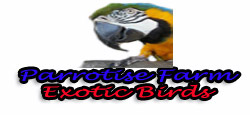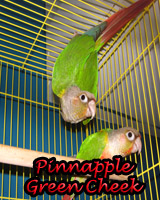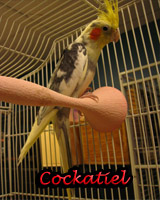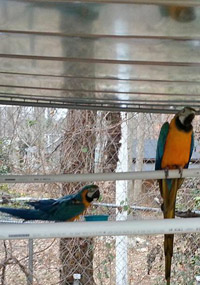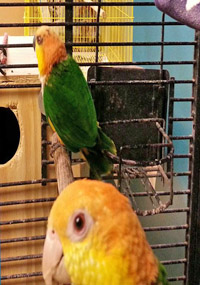

Food
The Blue and Gold Macaw, is a large South American parrot with blue top parts and yellow under parts.

Food
The Blue and Gold Macaw, is a large South American parrot with blue top parts and yellow under parts. It is a member of the large group of neotropical parrots known as macaws. It inhabits forest (especially varzea, but also in open sections of terra firme or unflooded forest) and woodland of tropical South America. They are popular in aviculture because of their striking color, ability to talk, ready availability in the marketplace, and close bonding to humans.
×
Toys
The scarlet macaw (Ara macao) is a large red, yellow, and blue South American parrot,

Toys
The scarlet macaw (Ara macao) is a large red, yellow, and blue South American parrot, a member of a large group of Neotropical parrots called macaws. It is native to humid evergreen forests of tropical South America. Range extends from extreme south-eastern Mexico to Amazonian Peru, Colombia, Bolivia, Venezuela and Brazil in lowlands up to 500 m (1,640 ft) (at least formerly) up to 1,000 m (3,281 ft).
×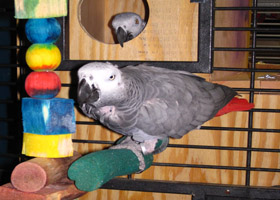
Training
The Congo African Grey Parrot (Psittacus erithacus erithacus), is the largest and more commonly known of the two types of the African Grey Parrot.

Training
The Congo African Grey Parrot (Psittacus erithacus erithacus), is the largest and more commonly known of the two types of the African Grey Parrot. Congo African Grey Parrots are approximately 12 – 14 inches (32-26 cm) in length and usually weigh 16 ounces (450 g). They are gray in color and have a solid black beak with a bright red tail. Congo African Grey Parrots
×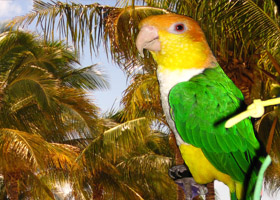
Cages
Timneh African grey parrot, is a West African parrot that is variously considered a subspecies of the African grey parrot Psittacus erithacus timneh

Cages
Timneh African grey parrot, is a West African parrot that is variously considered a subspecies of the African grey parrot Psittacus erithacus timneh. Growing to 28–33 centimetres (11–13 in) in length and weighing 275–375 grams (9.7–13.2 oz),[2] the Timneh is a medium-sized parrot. Its plumage is mainly a mottled grey, with a white face mask and pale yellow eyes.
×
Socialization
The green-cheeked parakeet or green-cheeked conure (Pyrrhura molinae) is a small parrot of the genus Pyrrhura, which is part of a long-tailed.

Socialization
The green-cheeked parakeet or green-cheeked conure (Pyrrhura molinae) is a small parrot of the genus Pyrrhura, which is part of a long-tailed group of the New World parrot subfamily Arinae. This type of parrot is generally called a conure in aviculture. It is native to the forests of South America. The green-cheeked parakeet is typically 26 cm (10 in) long and weighs 60 to 80 g. It is mainly green, with a brown/black/grey crown, white periophthalmic rings, green cheeks, blue primary wing feathers, a grey beak, and its long pointed tail is mostly maroon. It has short transverse striations on its breast and a red abdominal area. Males and females have an identical external appearance
×
Good Wood/Bad Wood
The green-cheeked parakeet or green-cheeked conure (Pyrrhura molinae) is a small parrot of the genus Pyrrhura, which is part of a long-tailed.

Good Wood/Bad Wood
The green-cheeked parakeet or green-cheeked conure (Pyrrhura molinae) is a small parrot of the genus Pyrrhura, which is part of a long-tailed group of the New World parrot subfamily Arinae. This type of parrot is generally called a conure in aviculture. It is native to the forests of South America. The green-cheeked parakeet is typically 26 cm (10 in) long and weighs 60 to 80 g. It is mainly green, with a brown/black/grey crown, white periophthalmic rings, green cheeks, blue primary wing feathers, a grey beak, and its long pointed tail is mostly maroon. It has short transverse striations on its breast and a red abdominal area. Males and females have an identical external appearance
×